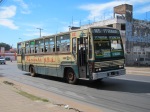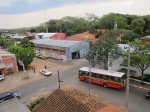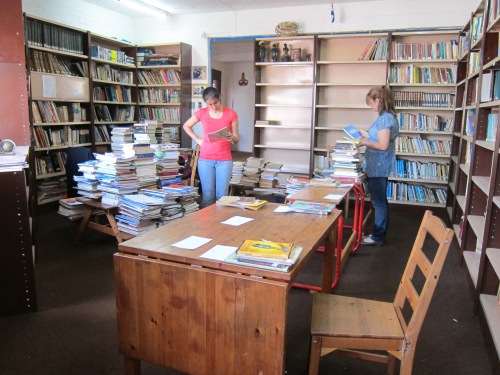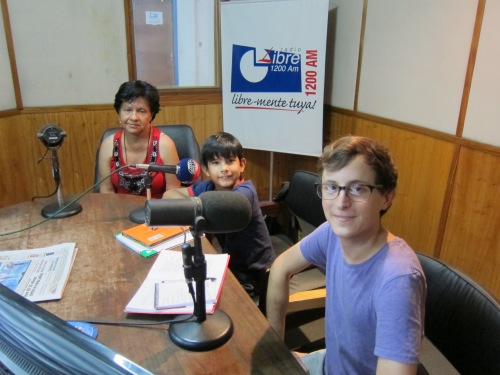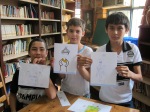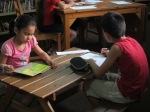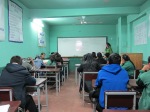Matias, the 12-year-old son of Cristina who helps out the family next door told me there’s a saying: “That [thing/person] is more Paraguayan than tereré,” because really, you can’t get much more Paraguayan than this traditional drink that is passed and sipped all day, every day. (Later he told me that there was a saying “That [thing/person] is more Paraguayan than popcorn,” which I Wikipedia-ed and popcorn is from either Mexico or Peru, so my 12-year-old source on Paraguayan phrases might be a little dubious). Either way, I bought my own tereré equipment the other day, and I thought I should use this opportunity to write my obligatory Peace Corps Paraguay blog post on tereré.
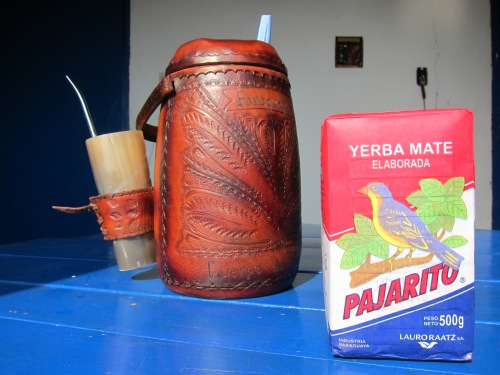
My equipo!
For those of you who are already Paraguay-savvy, here are some updates about what is coming up in my life next so you can skip the tereré talk (updates about what just happened are here). In a little over a week the volunteer network I’m working with will be having it’s second annual conference about volunteerism in Paraguay. Right after that I go to “reconnect” which is three more days of Peace Corps training, but more importantly I get to see all of the volunteers with whom I spent my first 10 weeks in Paraguay. Then it’s Thanksgiving, which I’ll be celebrating with friends, and then what do you know, it’s already December!
Now, tereré! Tereré refers to a cold tea of yerba. The dry yerba leaves are placed in the guampa (special tereré cup) and ice water is poured over them to create a refreshing drink with an herbal/smoky flavor. You drink the tereré through a metal straw with a mini strainer at the end called a bombilla. Some people put yuyos and remedios (herbs) in either the thermos of water or the guampa. There are countless herbs that people use to cure all kinds of ailments. Also, yuyos are generally only added in the morning-time, not really sure why.
While I could buy yuyos in the supermarket and mash it with a mortar and pestle myself, or buy it on the street and have someone mash it for me, I am lazy and mortar-less, so I buy the yerba that comes pre-mixed with a yuyo. I really like the taste of the tereré mix that comes with the herb burrito, but when I mentioned this to my friend, she told me: “I can’t drink that, it makes me too hungry.” I delved further and realized that this was a nice way of saying burrito really flushes out your digestive system. As I soon experienced, each morning of drinking my burrito-infused tereré was like preparing for a colonoscopy.
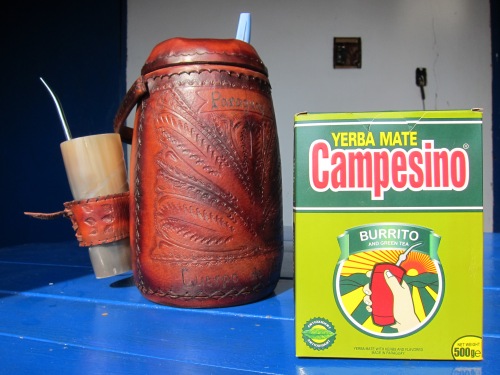
Burrito: it makes you poop
But tereré is not just a drink, it is an activity. You can drink tereré by yourself, but in groups, it is always shared. One person (by tradition it’s usually the youngest) serves the tereré. The server holds the thermos of water and fills up the guampa to pass it around the group. When it is your turn, you drink the entire cup and pass it back to the server who fills it back up to serve the next person.

A group of friends drinking in the tereré circle
One custom I had difficulty with at first was saying, “gracias”. It seemed logical to me to thank the server when he/she handed me the guampa or when I handed it back. But NO, don’t do this. To say “gracias” is to say “thanks, I’ve had enough.” One of the first times I shared tereré I only got one sip before a “gracias” slipped out of my mouth and I was out of the rotation.
Tereré is very much part of the culture, and reflects the culture, of Paraguay. I’ve found that there is a strong habit of sharing here, especially within the family and community. It also shows how open and welcoming people are – in the States, you’d only maybe use the same straw as your close family or partner, you’re not likely to share between a toothless man and a half-dozen other strangers you’ve just met. The pace of the tereré is also very tranquilo, very slow, and sometimes people hold on to the guampa for a while before passing it back (which can be frustrating for a thirsty American).
Finally, my new equipo. I decided to go more basic and subdued (although there are some really beautiful sets with ñandutí) and bought a simple leather design and a guampa made from a cow’s horn. You can see I’ve had it inscribed with “Paraguay” and “Cuerpo de Paz” on the bottom – a nice recuerdo, souvenir, from Paraguay.

Close-up on the termo
I have been told by many that my guampa is “simpático”, a word here in Paraguay that would usually be translated to “amusing” or “funny”, but in a nice way. This is because my guampa is large. I used to defend it by pointing out that it has a large wooden base within the horn and it’s more slender, so it actually holds the same amount of tereré as any average guampa. But I decided I don’t really need to defend it. Some people just have large guampas, and some people like their guampas large.

Sippin’ that tereré



































